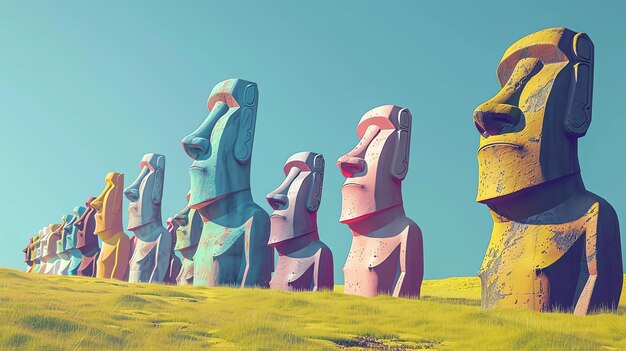
If you’re planning a trip to Easter Island and wondering about the best things to do while you’re there, you’re in for a treat! Easter Island, a small volcanic landmass situated in the vastness of the Pacific Ocean, is a unique destination that belongs to Chile. Known globally for its large, monolithic moai statues—about 900 in total—these intriguing figures were crafted between the 13th and 16th centuries to honor significant individuals of the island. However, they were toppled during tribal conflicts in the late 18th and early 19th centuries but were re-erected in the 20th century thanks to archaeologists.
Adding to its allure, Easter Island is among the world’s most remote inhabited islands. Just getting there requires a bit of time: one day to reach Santiago, Chile’s capital, and another to fly to the island. Despite its isolation, this enigmatic island promises incredible, once-in-a-lifetime experiences.
Let’s dive into some of the best places you can visit on Easter Island:
Rano Raraku is the main quarry where the famous moai statues were crafted. You can see hundreds of statues here in various stages of completion, each carved from the volcanic rock by the Rapa Nui people between 1250 and 1500. Once finished, these statues were transported and set up along the coastline on rectangular stone platforms known as ahu, which often contained more than one statue. These moai represent the ancestors of the Rapa Nui people. Interestingly, the quarry appears as if it was suddenly abandoned, with work stopping abruptly. Located on the slopes of a volcano, Rano Raraku also features El Gigante, the largest moai ever built at 22 meters tall.
Ahu Tongariki is the largest and most renowned ahu on the island. Previously mentioned ahus are platforms for the statues, and Ahu Tongariki is the most prominent of them all. It was the main center and capital of the Hotu-iti clan that lived on the island. With 15 massive statues, it is particularly stunning at sunrise. The heaviest moai is also here, weighing 86 tonnes. This ahu is just a kilometer away from the Rano Raraku Quarry.
Orongo, a stone village on the southwestern tip of Easter Island, once served as a ceremonial center for the Birdman cult from the 18th to mid-19th centuries. This site is famed for its round, windowless buildings and ancient petroglyphs. From Orongo, you can also see the crater of the dormant Rano Kau volcano and enjoy stunning sea views, including two small islets called Motu Nui and Motu Iti.
Beaches on Easter Island offer warm, turquoise waters perfect for swimming year-round. Though not the primary draw, they provide a relaxing complement to your explorations.
Ahu Akivi is a sacred spot featuring seven moai that all share the same shape and size, offering a view of the Pacific Ocean. Built in the 16th century, it served as a celestial observatory and remains one of the island’s must-see sites.
Since Easter Island is relatively small, biking around is one of the best ways to explore. This allows you to move at your own pace, taking in the volcanic landscapes and impressive statues along the way. Hiking is another fantastic option, with popular volcanic hills offering exciting trails. One of the top hikes is to Terevaka Volcano, the island’s highest peak at 506 meters above sea level. From there, you can enjoy a spectacular 360-degree view of the entire island.
Finally, the Tahai Complex is an essential archaeological site made up of three ahu. Ahu Ko Te Riku is known for its restored eyes, Ahu Tahai for its single grand statue, and Ahu Vai Ure for its group of five moai with the sea as a backdrop. The Tahai Complex is particularly magical at sunset, with the sun setting directly behind Ahu Vai Ure.
Easter Island is a place like no other, offering a unique blend of history, mystery, and natural beauty. Whether you’re marveling at the moai statues, biking through the landscapes, or enjoying a peaceful sunset, there are countless unforgettable moments awaiting you.